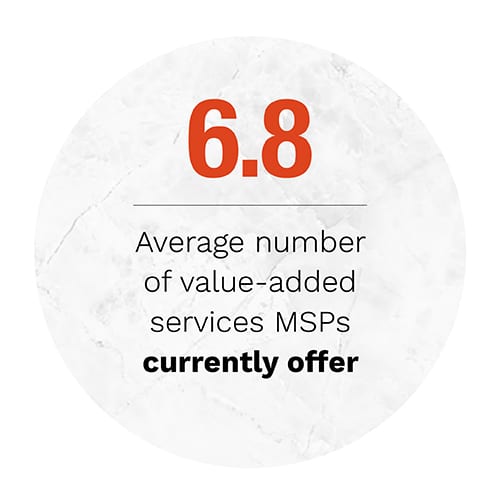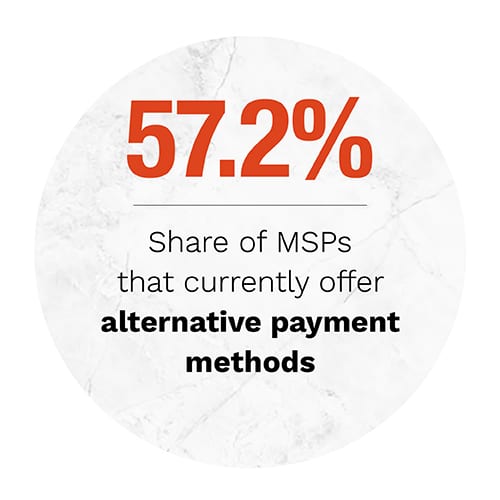New Data: Why MSPs Are Staking Their Futures On Value-Added Services
 The digital commerce ecosystem has opened up vast growth opportunities for businesses of all sizes and stripes. Even the smallest of enterprises can leverage services like cross-border payments, data analytics and customer management tools, transforming one-time purchasers to loyal customers.
The digital commerce ecosystem has opened up vast growth opportunities for businesses of all sizes and stripes. Even the smallest of enterprises can leverage services like cross-border payments, data analytics and customer management tools, transforming one-time purchasers to loyal customers.
 Businesses need help to access and deploy these powerful tools, however – and this means their merchant service providers (MSPs) must be prepared to step up. Many MSPs, including acquirers, independent sales organizations, payment gateways and payment facilitators, are starting to recognize this. Nearly 90 percent of MSPs consider offering value-added services (VAS) such as alternative payment acceptance and data analytics to be “very” or “extremely” important to their success.
Businesses need help to access and deploy these powerful tools, however – and this means their merchant service providers (MSPs) must be prepared to step up. Many MSPs, including acquirers, independent sales organizations, payment gateways and payment facilitators, are starting to recognize this. Nearly 90 percent of MSPs consider offering value-added services (VAS) such as alternative payment acceptance and data analytics to be “very” or “extremely” important to their success.
It’s one thing to recognize the importance of VAS. However, it’s another to offer the services that add genuine value and possess the processing infrastructure to support them. In The Key To Optimizing Merchant Services Report, in collaboration with Endava, PYMNTS surveyed executives at more than 200 MSPs, from those serving small businesses to those with more than $10 million in annual revenues. Our analysis reveals a wealth of insights on what’s driving the MSP innovation agenda and the role core processing plays in these plans.
 Most MSPs already offer a suite of VAS. Our research indicates that MSPs offer 6.8 services on average, and this number will jump to nearly 10 within the next two years if providers follow through on plans to ramp up offerings. Among a menu of two dozen services, four areas stand out as key priorities for MSPs now and in the years ahead: alternative payment methods, communication management, customer relationship management (CRM) and data analytics. These four areas are linked directly to what MSPs perceive to be their customers’ demands, according to our findings, and the overarching trend is that merchants want services that improve the customer experience and drive loyalty.
Most MSPs already offer a suite of VAS. Our research indicates that MSPs offer 6.8 services on average, and this number will jump to nearly 10 within the next two years if providers follow through on plans to ramp up offerings. Among a menu of two dozen services, four areas stand out as key priorities for MSPs now and in the years ahead: alternative payment methods, communication management, customer relationship management (CRM) and data analytics. These four areas are linked directly to what MSPs perceive to be their customers’ demands, according to our findings, and the overarching trend is that merchants want services that improve the customer experience and drive loyalty.
More than 57 percent of MSPs currently offer alternative payment methods — the ability to accept digital wallets and PayPal, for example — and 12 percent plan to add or enhance these offerings over the next two years. In the case of data analytics, 53.4 percent of providers currently offer such services, and 13.5 percent plan to add or enhance them in the future. Communication management services, such as the ability to send customer alerts, are currently offered by 48.6 percent of providers, while 13 percent expect to add or boost such capabilities in the future. One area looming especially large as an area of future investment are CRM tools, which 21.6 percent of MSPs plan to offer over the next two years, on top of the 46.6 percent that already do so.
tools, which 21.6 percent of MSPs plan to offer over the next two years, on top of the 46.6 percent that already do so.
To effectively deliver VAS, there is a strong consensus among MSPs that they should be integrated into core processing systems: 66.3 percent of respondents have this view. This means that these systems must be capable of supporting current and future digital solutions. For the majority of MSPs, improving their core systems is an ongoing priority. Our research shows that 63.4 percent of MSPs plan to either upgrade, build or partner with third parties to improve their core processing systems.
To learn more about the strategies MSPs are pursuing to bring the VAS to market, download the report.